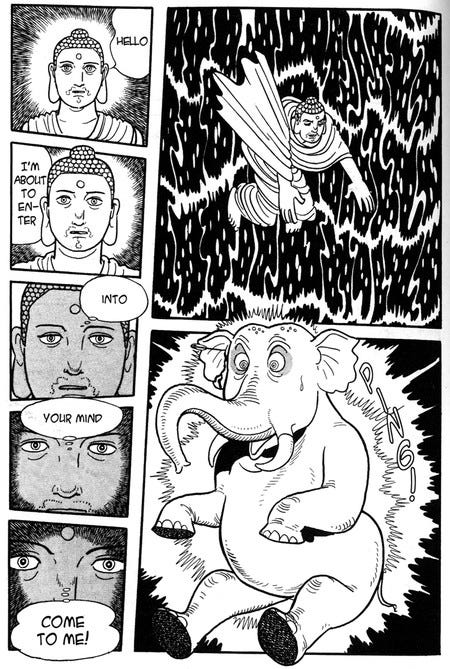Wrapping up the last week of happenings, offline and online.
A watch made by aliens, Nointay, a thing I wrote and one more.
A reminder: I’m running a 5K at the end of May and helping fundraise for the UNRWA USA in an effort to afford Palestinian refugees (mostly children) mental health services. The money raised goes directly to mental health services and counselors — also refugees, by the way — providing those unable to leave the Gaza Strip with psychosocial aid. So please, if you can, donate some funds, pass the fundraising link around (please!) and help out.
Yo. This week’s newsletter is sourced from Apple Music, my email inbox, an offline book club, my own two hands, my one brain, and Discord.
A Watch Made For Humans By Aliens
Most of you already know how much I love G-Shock and Casio digital watches; the endless race of upgrading wearable technology with every digital tool and function imaginable — without making it a screen-forward smartwatch — is simply fascinating to me. Add the water- and shock-resistant toughness of a G-Shock to an LCD, give it the ability to self-set based on time signal radio broadcasts around the world (yes, some watches can do that), and give it color match my mood and/or style for the day. That is my idea of timekeeping perfected.
(Editor’s note: I am not a watch guy.)
After six years of collecting way too many digital watches, this dated novelty still hasn’t worn off on me. So it should come as no surprise that I got my hands on the latest model of G-Shock: the cartoonishly ugly GA-V01. It’s obviously a bold design thanks to its spiny resin casing and an amalgamation of Y2K color schemes that remind me of, I don’t know, the weaponry from Men In Black mixed with the absolute worst shoes you’d find at a 2003 Marshalls. The GAV01 series is practically four variations of every watch Burger King ever sold.
I recently got the GA-V01A-8A (the ugly silver one) and have no idea what to do with it. Obviously, I’ll wear it, but it’s so ungodly huge I find it distracting when I look in a mirror or look at my wrist. It’s also hard to use it to tell time, which, shockingly, is why I wear watches. Strangely, the hour markings wrap over the display glass, sort of holding it like a claw, but also block the view. That minute hand is fat as hell, again, obfuscating the display. The glass itself has this bubble-like glare I can’t seem to penetrate with mortal eyeballs. That negative display is dimly lit, so I can’t seem to ever read the time and date as fast as I’d like.
This is so obviously a watch that puts style over function — though, hey, its 10-year battery life is pretty cool — and I don’t necessarily hate that, nor do I dislike the willingness to be playful. I’ll need to break it in over the weekend and just wear it out, because right now, it’s giving me a hardcore spotlight effect when I have it on my arm.
Will I end up liking it? Time will tell.
On The Effectiveness Of “Dumb” Phones
I recently wrote this story for HuffPost in which I spoke with various experts about how smartphone addiction forms and if it’s even a (clinically) real thing. Why? Because I wanted to survey people I found on the internet whose solution to breaking addiction was to downgrade and use a “dumb” phone instead.
(Full disclosure: I used a Light Phone II for roughly two years of my life and thought it was essential for daily mindfulness. But it also made me hyper-aware of how many people were on their phones when I was around, and thus, also made me angrier at my friends.)
Like digital watches and good old fashioned journaling, retro tech can have a hand in reprogramming some learned behaviors you’ve acquired through daily smartphone use, giving you more time to concentrate on deliberant tasks and minimizing distractions along the way. If the thought of ditching your smartphone gives you anxiety or a type of digital FOMO, hey: it’s not for everyone. But touching grass does, indeed, have its benefits.
This part didn’t make it into the final story, but if you’re interested in how smartphones work:
While social media may not be inseparable from smartphone use, smartphones can aid in reinforcing social media use, just as much as, say, it can help compel you to open DraftKings, an email or text or a news headline. According to Dr. Nesi, this is due to intermittent reinforcement, a behavioral psychology theory that can reinforce a behavior only sometimes, but not all of the time.
Take your phone's notifications, for example. Any sort of ping, banner or pop-up that comes across your phone can repeatedly cause you to come back and look at it, even when you're attempting not to. Those constant notifications serve as a reminder that you may be missing something, sort of like a technological FOMO, or just remind you: hey, you haven't looked at this app in a while.
“Sometimes we open our email or an app and nothing exciting is happening. But sometimes we do it and we get something fun, exciting, funny or surprising that draws us back in. And the fact that we can't predict when those rewards are going to happen make it more likely for us to keep checking to seek them out.”
Niontay - “Top da top”
Osamu Tezuka’s Buddha
I recently joined an interfaith book club. I wish I could say it’s because I’m curious to learn about the world’s religions, but club kind of Trojan Horse’d its way into my life by way of a manga I’ve always wanted to read: Osamu Tezuka’s Buddha, a hefty eight-part epic manga series fictionally detailing the life and death (….?) of Siddhartha Gautama.
Osamu Tezuka, creator of Astro Boy and generally considered to be the godfather of manga, spent over 10 years writing and illustrating Buddha from 1972 through 1983. It is, by far one of the most entertaining graphic tales I’ve ever read. The book is so realistically detailed on one page and brutally violent the next — much like Shigeru Mizuki’s autobiographical World War II story, Onward Towards Our Noble Death. Panels shift from old school Disney animation-eyed animals (see below) to bloodied scenes of conquests and warfare, all while Tezuka swiftly details the brutal ancient India caste system and the class struggles that come with it.
The 400-page volume one introduces as cast of characters who are all suffering in their own ways and see their stories intersect with one another. There’s Tatta, a fictional child pariah (on the caste system, that’s lower than slave) thief who has the ability to possess animals; Chapra, a Shudra (common folk, working-class) child who seeks to avenge his pillaged village by becoming a warrior and killing a well-known Kosalan general; Bandaka, an asshole jerk archer; Naradatta (Brahmin, at the top of the caste), a monk and disciple of Master Asita (also Brahmin) who is on a journey to find a man who has the power to change the world. Actually, Siddartha isn’t really in this much at all. He’s not even born until the latter third of the tale...It almost serves as a prequel to his life.
I’ve only read volume one (I’m on volume two atm) so I can’t speak on the rest of the series, but the strange mix of mysticism, spirituality, violence, juvenile humor, and extremely detailed two-page illustrations of India make this one of the unique graphic tales I’ve had a pleasure of reading, and I wholeheartedly recommend anyone pick this up. I actually can’t believe it’s from the ‘70s. (For the record: I haven’t read much manga.)
Support Polygon Workers and the Vox Media Union
I’m a union guy. Consider donating to the recently laid off workers of Polygon and show your support to the Vox Media Union. They’re asking for $50,000 in total to share amongst its workers, but remember: every dollar counts.
Links, Notes, More Ways Into Eavesdropping My Life
Andrea Long Chu straight up Ether’d (death’d) Ocean Vuong this week at Vulture. (It sounds like she still enjoyed On Earth, though.)
Al Pierre at P4K hypothesizes WTHelly is Bieber doing lately? for Pitchfork.
I actually have no idea how the pope is chosen and it feels weird to cheer on an archaic process like it. (Shouts to the I hate all old white men crowd who have been actively enjoying this past week.) Very interesting that we’re all collectively watching as a group break from the usual chaos.
"We’re watching what happens when the people who don’t really understand work control everything," Nathan Grayson at Aftermath.
Why Is the NYPD Summoning Cyclists to Court?, via the person on my LinkedIn cover profile photo.
Niontay explains his credit card statement with Dylan Green at Hearing Things.
K-Pop Fans Remain Allergic To Taste, Gita Jackson at Aftermath.
I hit my email length limit so I’m cutting it here.











